Three Factors of Aging Skin
Jun.24.2024
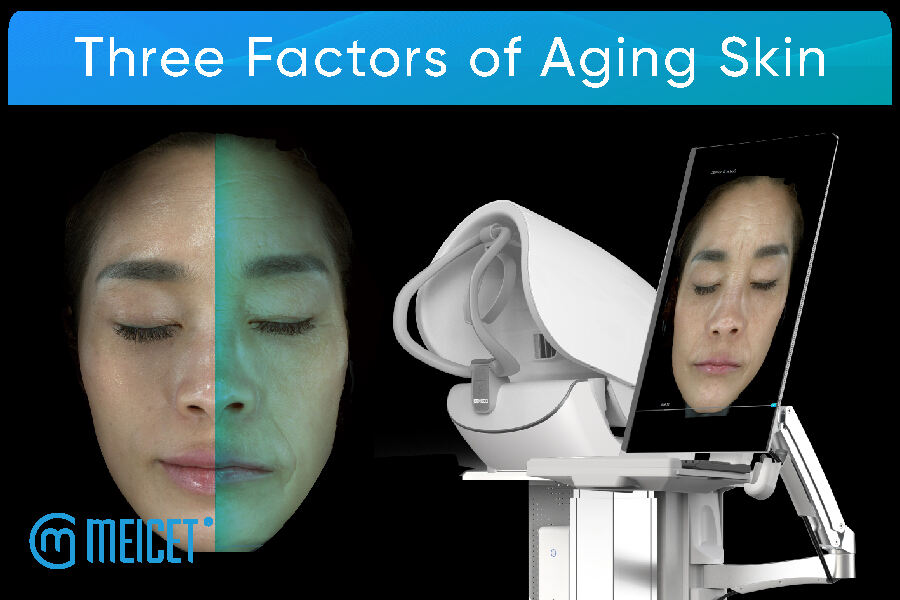
The number one factor in skin ageing:
UV radiation, photoaging
70% of skin aging originates from photoaging
UV rays affect the collagen in our body, which keeps the skin looking young. If collagen shrinks, the skin will have reduced elasticity, sagging, dullness, uneven skin tone, hyperpigmentation, pigmentation and other skin problems.
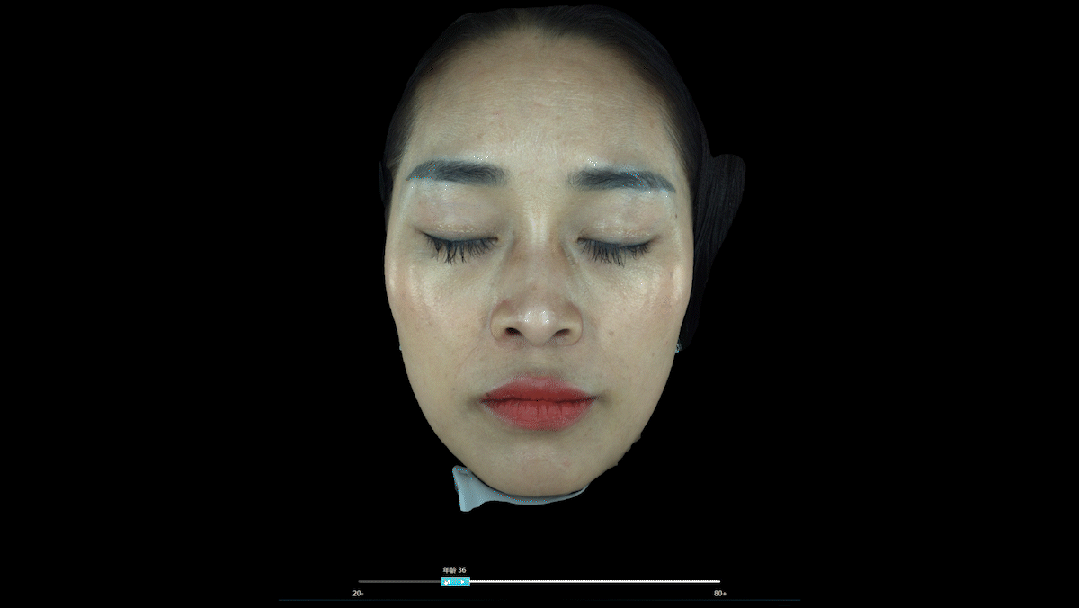
The sun's broad spectrum is divided into UVA and UVB. UVB rays have short wavelengths and can only burn the top layer of our skin, unable to penetrate deeper into the skin; however, UVA rays have long wavelengths and can penetrate through the glass and deeper into the skin, ultimately weakening the collagen and leading to the development of wrinkles.
In simple terms, UVA leads to aging, UVB leads to burning, and ultraviolet light can damage cellular DNA, reduce fibroblast activity, and collagen synthesis is blocked, leading to cell mutation, aging, and apoptosis. So, UV is everywhere, whether it's sunny or cloudy, you need to do a good job of sun protection.
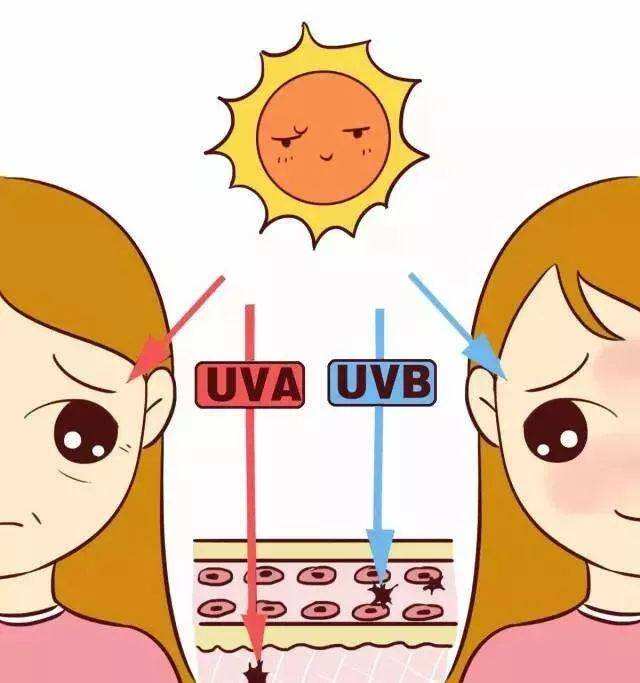
The second most important factor in skin ageing
Oxidative free radicals
The key word for free radicals is ‘oxygen’. We breathe about 98 to 99 per cent of oxygen every time we breathe; it's used to burn the food we eat and release small molecules for our cells to metabolise, and it releases a lot of energy to make our muscles work.
But maybe 1% or 2% of the oxygen chooses a different and dangerous path, this small amount of oxygen, often called free radicals, which attack our cells. Over time, this damage accumulates over time.
The most noticeable are the signs of ageing that show up on the skin. Our body has a defence mechanism that repairs the damage done to our cells by free radicals, but when free radicals accumulate faster than the body's cells can repair them, the skin gradually ages.
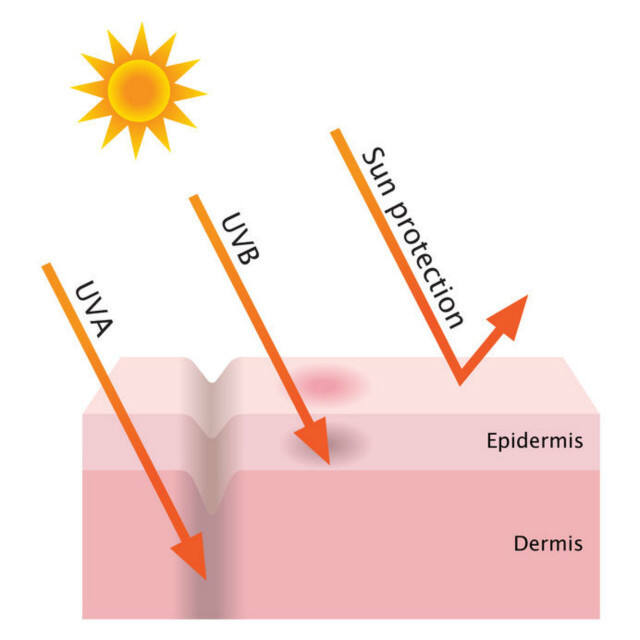
The picture above is the real skin tissue of our body, you can clearly see that the top epidermis is darker and the bottom dermis is slightly brighter, the dermis is where we produce collagen, and the cells that produce collagen are called fibroblasts, which are collagen making machines.
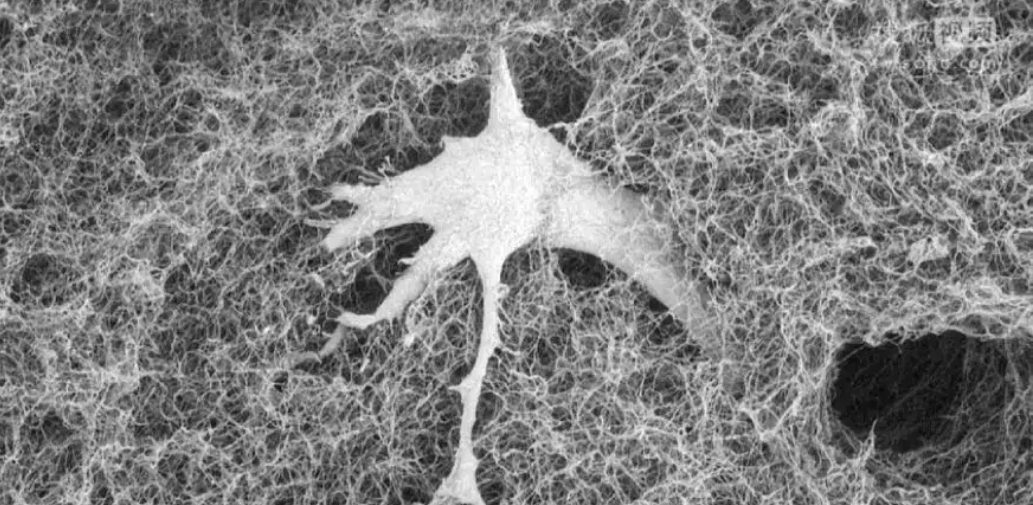
The fibroblasts in the middle of the picture are the fibroblasts, and the spider web around them is collagen. Collagen is produced by fibroblasts, and young skin is a three-dimensional and tightly knit collagen network, with fibroblasts powerfully pulling on the collagen fibres to give young skin a full and smooth texture.
And the old skin, fibroblasts and collagen link between the disintegration of the aging fibroblasts will often refuse collagen penetration, over time, the skin also began to aging, this is what we often say the skin aging, how do we solve the oxidation of the skin received?
In addition to pay more attention to sunscreen, we can use some with vitamin A, vitamin E, ferulic acid, resveratrol and other ingredients of the skin care products; usually can also eat more brightly coloured fruits and vegetables, such as tomatoes, tomatoes are rich in lycopene.
It can absorb oxygen well and prevent oxidative stress, you can also eat more broccoli, broccoli contains a component called mustard oil glycosides, after the intake of this ingredient, they will be stored in the skin, so that the skin cells can self-protection, these fruits and vegetables can promote cell resistance to aging.

The third most important factor in skin ageing
Skin glycation
Glycation, in professional terms, is called a non-enzymatic glycosylation reaction or a Melad reaction. The principle is that reducing sugars bind to proteins in the absence of enzymes; reducing sugars are highly reversible with proteins, and reducing sugars and proteins undergo a lengthy oxidation, dehydrogenation, and rearrangement reaction, resulting in the production of late-stage glycosylation end-products, or AGEs for short.
AGEs are a group of irreversible, yellowish-brownish, associated biological wastes that are not afraid of enzyme destruction, and are one of the main culprits of human aging. As we age, AGEs accumulate in the body, leading to an increase in the hardness of the inner walls of blood vessels, an imbalance in bone metabolism leading to osteoporosis, and the destruction of collagen and elastin fibres in the dermis leading to skin ageing.Skin aging caused by glycation is summarised in one sentence: sugar destroys healthy proteins and transforms young protein structures into old protein structures, leading to aging and loss of elasticity of collagen and elastic fibres in the dermis.
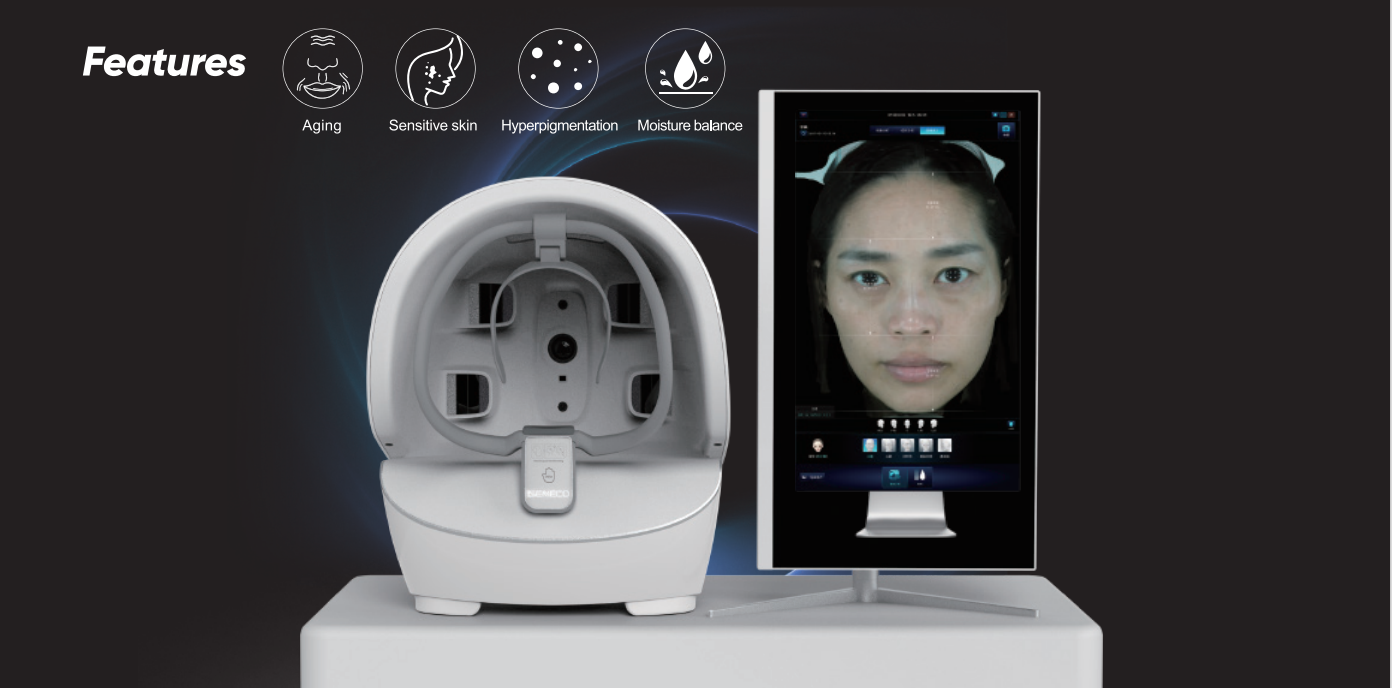
 EN
EN
 AR
AR
 BG
BG
 HR
HR
 CS
CS
 DA
DA
 NL
NL
 FI
FI
 FR
FR
 DE
DE
 EL
EL
 HI
HI
 IT
IT
 JA
JA
 KO
KO
 NO
NO
 PL
PL
 PT
PT
 RO
RO
 RU
RU
 ES
ES
 SV
SV
 TL
TL
 IW
IW
 ID
ID
 SR
SR
 SK
SK
 SL
SL
 UK
UK
 VI
VI
 SQ
SQ
 HU
HU
 TH
TH
 TR
TR
 FA
FA
 AF
AF
 MS
MS
 UR
UR
 BN
BN
 LA
LA

